Reminder
CULTURE OF SERBS IN DUBROVNIK – BEGINNINGS, LASTING AND RICHNESS
An Exhibition that Awakes and Refines
The connection between Serbs and this remarkable Mediterranean city has lasted for many centuries and was often transcendent. Temples and palaces, treasuries and books, galleries and collections, archives and cemeteries, and above all biographies and works of some of the most famous people of Dubrovnik testify about it. This heritage, that has long been wrapped in silence, has dived out this summer before our misty eyes, on a grandiose exhibition in the Serbian Archive and once again pointed out how history persistently repeats important lessons we missed to learn
By: Đorđe M. Srbulović
Photo: Serbian Archive and Dragan Bosnić
 The top cultural event of this season in the Serbian capital is probably the exhibition CULTURE OF SERBS IN DUBROVNIK 1790-2010. From the treasury of the Orthodox Church of Holy Annunciation. Opened at the end of June in the Serbian Archive, this exhibition offered us plenty of necessary knowledge enabling us to move incomparably easier through this magical Mediterranean city, its genuine past and present, especially through stereotypes and imposed concepts of it. The seemingly contradictory nature of the title is easily overcome: the exhibition brought before us the richness of the Serbian Orthodox Church of Holy Annunciation in Dubrovnik (objects, photos, church furnishings, archive documents, old books, paintings), while the voluminous accompanying catalogue gave a rich and diverse idea about the beginnings, development and lasting of the community of Orthodox Serbs in that city – we can easily say: despite the circumstances. The top cultural event of this season in the Serbian capital is probably the exhibition CULTURE OF SERBS IN DUBROVNIK 1790-2010. From the treasury of the Orthodox Church of Holy Annunciation. Opened at the end of June in the Serbian Archive, this exhibition offered us plenty of necessary knowledge enabling us to move incomparably easier through this magical Mediterranean city, its genuine past and present, especially through stereotypes and imposed concepts of it. The seemingly contradictory nature of the title is easily overcome: the exhibition brought before us the richness of the Serbian Orthodox Church of Holy Annunciation in Dubrovnik (objects, photos, church furnishings, archive documents, old books, paintings), while the voluminous accompanying catalogue gave a rich and diverse idea about the beginnings, development and lasting of the community of Orthodox Serbs in that city – we can easily say: despite the circumstances.
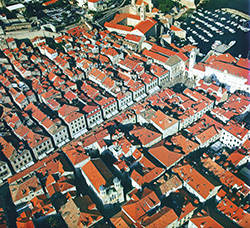 The exhibition was organized by the Serbian Orthodox Church Community in Dubrovnik, Serbian Archive and National Library of Serbia. Together with the catalogue – an impressive (over 420 pages), richly illustrated and popularly written scientific study, emerged as a result of several years of work of a team of experts – the exhibition made a whole which justified its title, since this catalogue-study offers a complete and comprehensive presentation of the past of Serbs and Orthodox Christianity in The exhibition was organized by the Serbian Orthodox Church Community in Dubrovnik, Serbian Archive and National Library of Serbia. Together with the catalogue – an impressive (over 420 pages), richly illustrated and popularly written scientific study, emerged as a result of several years of work of a team of experts – the exhibition made a whole which justified its title, since this catalogue-study offers a complete and comprehensive presentation of the past of Serbs and Orthodox Christianity in 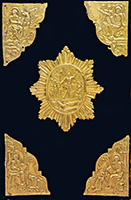 Dubrovnik, in a period longer than the exhibition shows, in all aspects which make the life of a national community: temples, cemeteries, societies, legacies, palaces and its owners, famous people, books and magazines, etc. Dubrovnik, in a period longer than the exhibition shows, in all aspects which make the life of a national community: temples, cemeteries, societies, legacies, palaces and its owners, famous people, books and magazines, etc.
The authors of the exhibition are priest Goran Spaić (Serbian Orthodox Church Municipality in Dubrovnik), Jelica Reljić and Miroslav Perišić, PhD (Serbian Archive). The authors of the exhibition of books are archpriest Slavko Zorica (Serbian Orthodox Church Municipality in Dubro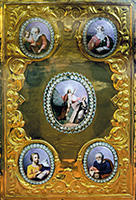 vnik) and Olivera Stefanović, PhD (National Library of Serbia). The artistic and graphic part of the exhibition was made by Ozarija Marković-Lašić. vnik) and Olivera Stefanović, PhD (National Library of Serbia). The artistic and graphic part of the exhibition was made by Ozarija Marković-Lašić.
The catalogue was created by Goran Spaić, Jelica Reljić and Miroslav Perišić, including texts of 19 authors, in addition to authors of photographs and those who researched the archives … All this undoubtedly speaks about the great undertaking of both Serbian and Croatian experts and scientists to present the life of Orthodox Serbs in Dubrovnik (Catholic Serbs as well, but much less, actually insufficiently).
 Made in several wholes, the exhibition included 250 exhibits from the funds of the Museum, Archive and Library of the Serbian Orthodox Church Municipality in Dubrovnik. Besides icons (the oldest exhibit is from the XV century), church books (starting from the Gospel of Kiev from 1703), liturgy objects, ecclesiastical clothing, and others, also exhibited were votive gifts: jewelry and silver plates, photos, portraits of famous Serbs from Dubrovnik, including artworks of Vlah Bukovac. The archive documents added a special value to the exhibition, such as the copy of the Agreement on a purchase of a house for the first Orthodox Church on Posat (first Church of Holy Annunciation, later dedicated to St. George). Made in several wholes, the exhibition included 250 exhibits from the funds of the Museum, Archive and Library of the Serbian Orthodox Church Municipality in Dubrovnik. Besides icons (the oldest exhibit is from the XV century), church books (starting from the Gospel of Kiev from 1703), liturgy objects, ecclesiastical clothing, and others, also exhibited were votive gifts: jewelry and silver plates, photos, portraits of famous Serbs from Dubrovnik, including artworks of Vlah Bukovac. The archive documents added a special value to the exhibition, such as the copy of the Agreement on a purchase of a house for the first Orthodox Church on Posat (first Church of Holy Annunciation, later dedicated to St. George).
BEGINNINGS
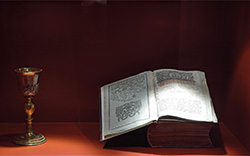 The history of Dubrovnik and the bonds of medieval Serbia with the city-republic are an often subject of Serbian historians. Not large in space, but with a long and deep duration, this city-state appreciated its freedom and independence above anything else. In order to preserve any kind of autonomy, the wisest people of Dubrovnik made various arrangements throughout centuries and most often paid for its autonomy, while empires were changing in the foreground. After Byzantium and Serbia, the powerful empire of traditional Islam came, Turkey. The centuries-long presence of that empire in the immediate vicinity will be the main cause of the difficult position of the Orthodox Serbian population that settled in the city area of Dubrovnik, as far as it was possible. Serbs mainly came from eastern Herzegovina and Mostar, then from Sarajevo and central Bosnia. Some also came, during the centuries, from Montenegro. The fact that they were formally ”Turkish citizens” served as an explanation for centuries for not granting permission for erecting an Orthodox church in Dubrovnik, so as not to, as they The history of Dubrovnik and the bonds of medieval Serbia with the city-republic are an often subject of Serbian historians. Not large in space, but with a long and deep duration, this city-state appreciated its freedom and independence above anything else. In order to preserve any kind of autonomy, the wisest people of Dubrovnik made various arrangements throughout centuries and most often paid for its autonomy, while empires were changing in the foreground. After Byzantium and Serbia, the powerful empire of traditional Islam came, Turkey. The centuries-long presence of that empire in the immediate vicinity will be the main cause of the difficult position of the Orthodox Serbian population that settled in the city area of Dubrovnik, as far as it was possible. Serbs mainly came from eastern Herzegovina and Mostar, then from Sarajevo and central Bosnia. Some also came, during the centuries, from Montenegro. The fact that they were formally ”Turkish citizens” served as an explanation for centuries for not granting permission for erecting an Orthodox church in Dubrovnik, so as not to, as they  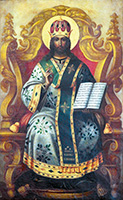 used to say, ”provoke Turkey and not to endanger the Republic”. There were diplomatic attempts, though, and the Russian consul, after a series of troubles, succeeded in receiving the permission to open an Orthodox chapel within his residence (however it never happened), and although one of the most famous Serbs of his time and great diplomat of ”world caliber” Sava Vladislavić bought a house and land with the intention to turn them into a temple, the opening of the Orthodox Church took place only in 1790. The temple still wasn’t erected, yet a house was bought in a part of Dubrovnik called Posat and adapted into a temple. It was the first Church of Holy Annunciation. The fate of this temple is very interesting, and its present dedication to St. George, or, as they say in Dubrovnik, St. Đurđe, testifies about it. The design of the church and cemetery, made by architect Lorenzo Viteleski, was preserved, as well as the documents: agreements, costs, notes, etc. used to say, ”provoke Turkey and not to endanger the Republic”. There were diplomatic attempts, though, and the Russian consul, after a series of troubles, succeeded in receiving the permission to open an Orthodox chapel within his residence (however it never happened), and although one of the most famous Serbs of his time and great diplomat of ”world caliber” Sava Vladislavić bought a house and land with the intention to turn them into a temple, the opening of the Orthodox Church took place only in 1790. The temple still wasn’t erected, yet a house was bought in a part of Dubrovnik called Posat and adapted into a temple. It was the first Church of Holy Annunciation. The fate of this temple is very interesting, and its present dedication to St. George, or, as they say in Dubrovnik, St. Đurđe, testifies about it. The design of the church and cemetery, made by architect Lorenzo Viteleski, was preserved, as well as the documents: agreements, costs, notes, etc.
 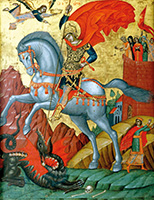 So, only in the late XVIII century, Orthodox Serbs got their first church and cemetery. And this first cemetery was raised on the estate of Sava Vladislavić, who left Dubrovnik without seeing the opening of the first Orthodox temple. Up to then, Serbs were buried ”above the road, on the slopes of Srđ, without visible markings”. There were already many Serbs who contributed to the development of Dubrovnik, however their faith and nationality were not recognized. So, only in the late XVIII century, Orthodox Serbs got their first church and cemetery. And this first cemetery was raised on the estate of Sava Vladislavić, who left Dubrovnik without seeing the opening of the first Orthodox temple. Up to then, Serbs were buried ”above the road, on the slopes of Srđ, without visible markings”. There were already many Serbs who contributed to the development of Dubrovnik, however their faith and nationality were not recognized.
The second Orthodox church in Dubrovnik was erected on Boninovo and dedicated to Holy Archangel Michael (with a cemetery around it). However the big church in the city was erected only in 1877 – the present Church of Holy Annunciation. The design made by the city architect Emil Vechietti was preserved, as well as an astonishing number of other valuable documents. The high level of civilization and consciousness of the city population is truly amazing, so almost all documents were preserved. Thus the Dubrovnik archives even today represent an inexhaustible source for researchers.
DURATION
 bdi nad dubrovnikom 01 copy.jpg) Together with the church, the question of schools for Serbian children was immediately raised, and they soon began opening. This brought teachers, books arrived; soon the printing of books, newspapers and magazines began. The functioning of Serbian institutions was enabled by the existence of legacies and endowments. The institutions also included homes for the elderly, weak and poor. Thus we come to the most important part of any story – the people. Together with the church, the question of schools for Serbian children was immediately raised, and they soon began opening. This brought teachers, books arrived; soon the printing of books, newspapers and magazines began. The functioning of Serbian institutions was enabled by the existence of legacies and endowments. The institutions also included homes for the elderly, weak and poor. Thus we come to the most important part of any story – the people.
Besides the general and individual care of the clerics – metropolitans and patriarchs, bishops and priests – the Serbian Orthodox Church Municipality in Dubrovnik was before all developed by members of respectable and rich merchant and naval families, mostly settled from the second and third decade of the XIX century. It often happened that members of these families went further, to Trieste, some to Venice, some even to America.
When speaking about remarkable Serbian families in Dubrovnik, the authors of the exhibition and catalogue first mention the Bošković family, stating that they were the most famous and richest Serbian family in Dubrovnik during the XIX century. The most important representative of this family, Božo, was president of the Serbian Orthodox Church Municipality and great Serbian benefactor. Not less significant, with numerous different life stories and fates, were the families of Berdović, Barbić, Aleksić, donor captain Niko Kovačević (who raised the home for poor Serbs), Konstantinović-Opuić, Lainović-Tošović (whose founder was a woman!), Bravačić, Milišić, Mičić, Ćorović, Škuljević...
LUXURY
  The testimonies about them, if there are no living descendants, are given by representative villas, personal jewelry and art kept in the museum, or granted to the Serbian Orthodox Church or any other foundation or institution ”available” to the people, monumental tombstones – masterpieces of sculpture, written heritage, paintings-portraits, family and personal photographs. Fates of merchants, teachers, priests, seamen, lawyers, artists, photographs take turns through the book-catalogue about Serbs in Dubrovnik... The testimonies about them, if there are no living descendants, are given by representative villas, personal jewelry and art kept in the museum, or granted to the Serbian Orthodox Church or any other foundation or institution ”available” to the people, monumental tombstones – masterpieces of sculpture, written heritage, paintings-portraits, family and personal photographs. Fates of merchants, teachers, priests, seamen, lawyers, artists, photographs take turns through the book-catalogue about Serbs in Dubrovnik...
We are also presented valuable knowledge about the famous people who used to live and work in Dubrovnik for a long or short time, leaving a bright trace and advancing the life of the city itself, as well as the Serbs in it. For example, Georgije Nikolajević, teacher, priest and bishop. About bishop and scientist Nikodim Milaš. About academic painter Atanasije Popović. We also find out a lot about Vlah Bukovac, who eternalized many Serbs of Dubrovnik in his paintings-portraits. Kosta Strajnić, the unbelievable personality of the Dubrovnik and (then) Yugoslav culture, dives out before us again, as well as the tragic fate of the perhaps last truly Renaissance person of this city – Milan Milišić.
 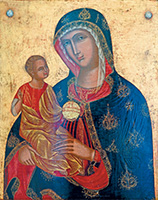 It is neither our objective nor possibility to turn this text into a history of Serbs in Dubrovnik. We only wish to point out to the reader, regardless if they visited the exhibition in the Serbian Archive or not, or if they have the accompanying catalogue-study, some of the possible paths of serious contemplation of this topic which has been wrapped in silence for a long time. History has its rules and caprices, and often sharply repeats us lessons we missed to learn. And the decades-long Serbian accepting of imposed banal general places about Dubrovnik and their compatriots in that beautiful Mediterranean city, from early commissarial brochures to the burning of truck tires for posing in the ”bombarded city”, is one of the terribly badly learnt lessons and ”history for repeaters”. It is neither our objective nor possibility to turn this text into a history of Serbs in Dubrovnik. We only wish to point out to the reader, regardless if they visited the exhibition in the Serbian Archive or not, or if they have the accompanying catalogue-study, some of the possible paths of serious contemplation of this topic which has been wrapped in silence for a long time. History has its rules and caprices, and often sharply repeats us lessons we missed to learn. And the decades-long Serbian accepting of imposed banal general places about Dubrovnik and their compatriots in that beautiful Mediterranean city, from early commissarial brochures to the burning of truck tires for posing in the ”bombarded city”, is one of the terribly badly learnt lessons and ”history for repeaters”.
***
Orators
The fact that this is a truly remarkable cultural event in Serbia is also justified by the fact that His Holiness Patriarch of Serbia Irinej, His Grace Bishop of Zahumlje and Herzegovina Grigorije, the then minister of culture in the Serbian government, as well as the ambassador of the Republic of Croatia in Belgrade, gave a speech at the exhibition opening.
***
Tales of the Archive
The exhibited archive documents also included agreements on the opening of first Serbian schools. The correspondence of metropolitans, patriarchs, priests and tutors with the authorities and contractors working on school objects. The census of Orthodox Serbs during the first half of the XIX century. The private correspondence of only some of the great number of significant and rich Serbian families in this city of merchants.
***
Catholic Serbs
Before the erection of the first Orthodox Serbian church, and later, especially during the XIX and early XX century, there was a great number of Catholic Serbs, still insufficiently known and recognized. Thus it could have happened that the state of Serbia didn’t mention the great jubilee of Ruđer Bošković (1711-1787) in 2011, one of the most important world scientists, although his father was Serbian, settler from eastern Herzegovina, and his mother Italian. He considered himself a man of Dubrovnik. He did belong to the Catholic Church with all his being and was, like his brothers and sisters, member of a monastic order (Order of Ignatius Loyola), but this doesn’t change anything.
|
